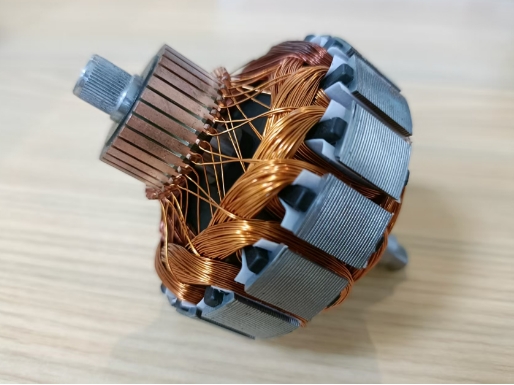Winding machines are specialized equipment used to wind materials such as conductors and enameled wires into coils. They are widely applied in the manufacturing of electronic components like motors, transformers, and inductors. Based on different winding methods, application scenarios, and automation levels, common winding machines can be categorized as follows:
1. By Winding Method
Parallel Winding Machine
Wires are wound in parallel arrangement, suitable for applications like inductors and relays where winding precision requirements are not stringent.
Stacked Winding Machine
Wires are wound in layers with each layer tightly packed, commonly used for coils requiring insulation layer separation, such as transformers and motor stators.
Flyer Winding Machines
Wire is guided by a rotating flyer arm, suitable for precision winding of frame-less coils or extremely fine wire gauges (e.g., miniature inductors).

Toroidal Winding Machines
Specifically designed for toroidal cores (e.g., toroidal transformers, inductors), where wire is rotated through the core's center during winding.
2. By Automation Level
Manual Winding Machine
Operator manually controls winding speed and wire feeding. Low cost but low efficiency, suitable for small batches or experimental use.
Semi-Automatic Winding Machine
Automated winding requires manual intervention for loading/unloading or parameter adjustments, balancing efficiency and cost.
Fully Automatic Winding Machines
Integrate automatic loading/unloading, wire cutting, and threading functions, suitable for mass production (e.g., automotive motor coils).
CNC Winding Machines
Program-controlled winding paths, speeds, and tensions, supporting complex coils (e.g., irregular windings, multi-axis coordination).
3. By Application Field
Motor Winding Machines
Used for stator and rotor windings. Common types include:
Stator Winding Machine: Designed for winding AC motor stator slots.
Rotor Winding Machine: Specialized for motor rotor coil winding.
Transformer Winding Machines
Process high/low-voltage coils with automatic interlayer insulation paper insertion.
Inductor Winding Machines
Precision winding for miniature inductors (e.g., chip inductors, toroidal inductors).
Solenoid Valve Winding Machines
Winds fine, dense coils for solenoid valves, typically requiring high-tension control.
4. Special-Function Winding Machines
Multi-Axis Winding Machines
Simultaneously winds multiple coils to enhance efficiency (e.g., electric vehicle motor production).
Precision Winding Machine
Used in medical devices, aerospace, and other fields, capable of micrometer-level wire diameters with high-precision tension control.
Flat Wire Winding Machine
Specialized for winding flat copper wire (e.g., new energy vehicle motor windings).
3D Winding Machine
Enables three-dimensional winding, suitable for complex coil structures.
5. Other Classifications
Vertical Winding Machines
Vertically oriented spindles save space and suit large coils.
Horizontal Winding Machines
Horizontally oriented spindles offer ease of operation and versatility.
Key Factors for Selecting Winding Machines
Wire Type: Round wire, flat wire, enameled wire, etc.
Coil Shape: Circular, square, irregular, etc.
Production Scale: Manual (small batches) vs. Fully automatic (large volumes).
Precision Requirements: Tension control, winding density, etc.
Different winding machine types vary significantly in efficiency, precision, and cost. Selection should be based on specific requirements. For example, new energy vehicle motors typically require fully automatic flat wire winding machines, while laboratory R&D may opt for CNC precision winding machines.









